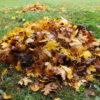Description
Mammoth Red Rock Cabbage
100 Seeds per pack
Days to Maturity: 90–100 Days
Sun Requirements: Full sun; tolerates light shade in hot climates.
Botanical Name: (Brassica oleracea)
First introduced in Denmark in 1889, this heirloom variety quickly grew in popularity for its size, rich coloration, and excellent flavor. An old-time favorite among home gardeners, it produces large, dense, round heads measuring 8–10 inches across and weighing 6–8 pounds. Plants grow about 12–14 inches tall and can spread up to 20–24 inches, forming compact but vigorous rosettes. Adaptable to zones 1–10, it thrives in cooler climates and withstands light frosts well. After a month of cold weather, its sugar content nearly doubles, enhancing its natural sweetness and making it an excellent choice for fall crops.
Heads are a striking deep red-purple throughout, with a crisp texture and a small to medium core. The flavor is mild and subtly sweet, pairing well with slaws, pickling, and sauerkraut. Also excellent in soups, stews, and stir-fries, or shaved raw into salads.
Stores well under cool conditions, holding its quality long into winter. Rich in vitamins A, C, E, and K, it’s a reliable and nutritious late-season favorite!
Planting Instructions for Mammoth Red Rock Cabbage Seeds
When to Plant:
Start seeds indoors 6–8 weeks before your last expected spring frost. Mammoth Red Rock takes about 90–100 days to mature and performs best in spring or early summer plantings. For a fall crop, sow seeds 10–12 weeks before your expected first frost, especially in areas with a long, cool autumn.
How to Start Indoors:
Sow seeds ¼″ deep in trays or cells filled with a fine, sterile seed-starting mix. Plant 2–3 seeds per cell, then thin to the strongest seedling after germination. Keep the soil evenly moist and place under bright light or grow lights to prevent leggy growth. Ideal temperature for germination is 60–70°F. Begin feeding with diluted organic fertilizer once the first true leaves appear. Transplant seedlings into larger pots when they develop 4–5 true leaves.
Hardening Off & Transplanting:
Harden off seedlings 7–10 days before transplanting by gradually introducing them to outdoor sun and temperatures. Transplant when plants are 4–6″ tall and nighttime temperatures remain above 40°F. Choose a sunny site with fertile, well-drained soil. Amend with compost 1–2 weeks before planting. Space seedlings 18–24″ apart in rows 30–36″ apart to accommodate the broad, dense heads.
Direct Sowing:
Sow seeds ¼–½″ deep and 18–24″ apart in early summer for a fall crop. Keep the soil evenly moist during germination. Once seedlings appear, thin to one plant per spacing. Protect young plants with row covers.
Growing Tips:
Mammoth Red Rock is a heavy feeder and thrives in nutrient-rich, slightly acidic soil. Side-dress with high-nitrogen fertilizer 3–4 weeks after transplanting. Mulch to conserve moisture and suppress weeds. Water deeply and consistently—aim for 1″ of water per week, adjusting for soil type and rainfall.
Pest Management:
Watch for cabbage worms, loopers, flea beetles, root maggots, and deer. Use row covers early in the season. Hand-pick caterpillars as needed. Cardboard or PVC collars can help deter root maggots. Install fencing or netting if deer are a concern. Rotate crops to reduce pest and disease pressure.
Diseases to Watch For:
Like other cabbages, Mammoth Red Rock may be susceptible to black rot, alternaria, and clubroot. Promote airflow, avoid overhead watering, and rotate crops annually to prevent buildup. Remove any infected plants promptly.
Harvesting:
Harvest when heads are large, deep red, firm, and round—typically 5–8 lbs. Cut with a sharp knife at the base. Heads may become even richer in color and flavor after a light frost. To reduce splitting risk, twist or sever roots slightly before maturity, especially after a heavy rain.
Storage:
Mammoth Red Rock stores very well in cold, humid conditions. Store heads in a root cellar or similar space at 32–40°F and 95% humidity. Properly stored, they can last several months.
Seed Saving:
Cabbage is a biennial and produces seed in its second year. To save seeds, overwinter healthy, true-to-type Mammoth Red Rock plants or store in a root cellar and replant in early spring. Plants will bolt and form seed pods. Allow pods to mature and dry on the plant before harvesting. Clean and store seeds in a cool, dark, dry place. Seeds remain viable for 3 to 6 years. We offer seed-saving envelopes that are ideal for long-term storage and easy labeling. Isolate from other cabbage varieties to preserve purity.
FAQ:
What is the historical or notable background of Mammoth Red Rock Cabbage?
First introduced in Denmark in 1889, Mammoth Red Rock quickly became a favorite among gardeners for its size, coloration, and flavor. Its excellent storage life has also made it a long-standing favorite among gardeners.
How would you describe the flavor of Mammoth Red Rock Cabbage?
Mammoth Red Rock has a mild, subtly sweet flavor that becomes noticeably richer after exposure to cold, making it especially delicious in fall and winter recipes.
What does Mammoth Red Rock Cabbage look like, and how does it grow?
It forms large, dense, round heads measuring 8–10 inches across and weighing 6–8 pounds. The heads are a striking deep red-purple throughout. The plants themselves are compact and vigorous, growing to about 12 inches tall with a similar spread.
How and when do I harvest Mammoth Red Rock Cabbage?
Harvest when the heads are firm, round, and richly colored, typically weighing between 5 and 8 pounds. A light frost before harvest enhances sweetness, and twisting the head after a heavy rain can help prevent splitting and cracking.
When is the best time to plant Mammoth Red Rock Cabbage?
Start seeds indoors 6–8 weeks before your last spring frost for a summer harvest. For a fall crop, plant seeds outdoors 10–12 weeks before your first expected frost.
What are the common culinary uses of Mammoth Red Rock Cabbage?
Its mildly sweet flavor and tender texture make it perfect for slaws, pickling, and sauerkraut. It's also great in soups, stews, stir-fries, or shaved raw into salads.
What’s the best way to store Mammoth Red Rock Cabbage after harvest?
Store in cold, humid conditions such as a root cellar at 32–40°F and 95% humidity. When properly stored, the heads can remain fresh and usable for several months.
What nutrients does Mammoth Red Rock Cabbage provide?
This variety is rich in essential vitamins A, C, E, and K, offering a healthy dose of antioxidants and immune-boosting nutrients in every meal!
Does Mammoth Red Rock Cabbage have any notable disease resistance?
While it may be susceptible to common brassica diseases like black rot, alternaria, and clubroot, proper crop rotation, spacing, and watering techniques can help minimize risks.


















Darrell cochran (verified owner) –
started theses also today
Richard Wallace (verified owner) –
Great
J H. (verified owner) –
A little small.